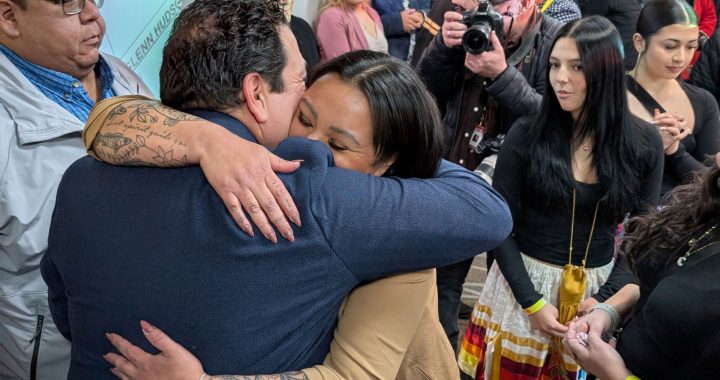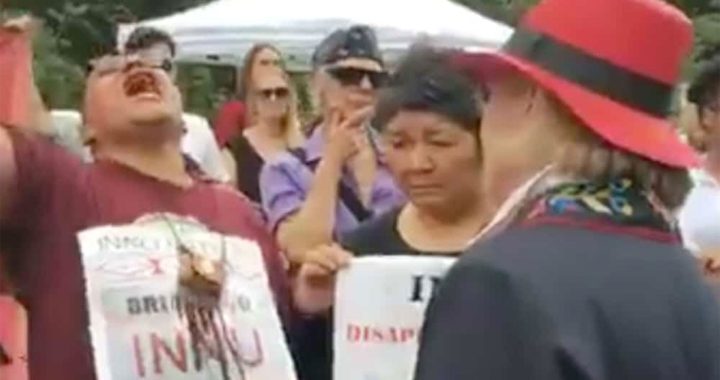
A new report is making 18 recommendations to encourage community healing in corrections. Photo: APTN News.
A prisoner advocacy organization in British Columbia says the Correctional Service of Canada (CSC) should have a third of its budget stripped away and that money should be diverted towards Indigenous governments and organizations.
In its report, Decarceration through Self-Determination, Prisoner’s Legal Services argues “Canada must move resources away from CSC and toward supporting self-determination so that First Nations, Inuit and Métis Peoples can decide what they need to address harm, create safety and heal their nations, communities, families and individuals from colonial genocide, outside of prisons.”
The organization says it’s making a number of recommendations because of the overincarceration of Indigenous people in prison “who are disproportionately warehoused in high levels of security, subjected to solitary confinement and uses of force, and prevented from accessing Indigenous-run healing lodges due to CSC’s racist security classification policies and risk assessments.”
The report says it “shines a light on the abuse of Indigenous people in prison, whose experiences are comparable to the treatment of Indigenous children in residential schools.”
“(The) $1 billion represents the approximate amount of money CSC spends incarcerating Indigenous people each year, who represent 32% of people in federal prison.”
According to CSC, its budget for 2023-24 is $3.05 billion – up $4 million from the previous budget.
That billion dollars, the advocacy group says, should go towards healing lodges under Sec. 81 of the Corrections and Conditional Release Act. Parliament added this section in the early 1990s with the hopes that some Indigenous offenders would be sent to healing lodges with services in the community rather than to prison.
But according to Prisoner’s Legal Services, and others who keep tabs on the correctional service in Canada, it hasn’t happened.
“Canada rarely approves applications by Indigenous governments or organizations to provide alternatives to incarceration through s 81,” says Jen Metcalfe, executive director of the organization. “The Indigenous-operated healing lodges that do exist through s 81 are subjected to the authority of CSC and its policies. Canada is not honouring Indigenous Peoples’ right to self determination as intended by the provision, and is not treating Indigenous governments or organizations as autonomous equals in providing correctional services.
“Section 81 initiatives are woefully underfunded compared to the money CSC spends incarcerating Indigenous people in Canada’s colonial prisons.”
Read More:
Canada’s prison system has changed little for Indigenous Peoples: Report
APTN Investigates: Inside Corrections
The 152-page report contains 18 recommendations and outlines the life stories of 13 First Nation, Inuit and Métis inmates and their experiences inside prison.
One of them is Buddy Klengenberg, 57, a residential school survivor, who was born and raised in Tuktoyaktuk.
“I’ve been in prison for 27 years. I thought, or was told, I’d be in for 10-15 years, but I didn’t know CSC had a plan to keep me in jail forever,” he says in the report. “I did nine years in Prince Albert penitentiary. The parole officers would tell me: ‘Just sign your parole away, you’re not ready for parole.’ So I did that for about 20 years or so.
“When I got to Pacific Institution, I had four parole officers in six months. They still kept telling me to waive my parole hearings, so I transferred back to Matsqui. Only now I’m being considered for release.”
Klengenberg’s story is an example, the group says, that the system needs changing.
According to data provided in the report, 74 per cent of Indigenous people serving determinate sentences are more likely to be held in custody until their statutory release (versus 55.8 per cent for non-Indigenous people), and those serving life sentences are less likely than non-Indigenous people to be released on parole at or near their eligibility date, and 79 per cent are released from medium or maximum security later in their sentences.
Connie Thorne, 54, is Métis, Chipewyan and Bush Cree.
“My older brothers and sisters, parents and grandparents went to residential school. They were abused, and abuse usually breeds abuse,” she says in the report. Growing up in Fort Simpson, Thorne says she was led to believe that Indigenous culture was like “witchcraft” and that Christianity was the “right way to go.”
The report doesn’t explain why Thorne is in prison, but it outlines how easily the system has kept her a medium security risk.
“I just went for my warden’s board today. They’re still keeping me at medium. I’ve been medium ever since I was incarcerated in 2019. Even though I have no institutional charges and I’ve never been violent in the institution,” she says.
The report says Thorne breached her parole conditions by going to visit her husband who was in jail. The couple had just lost their daughter to a fentanyl overdose.
“I didn’t think I was doing anything wrong because the Yukon jail permitted me to have visits with him and be in communication with him,” she says, “I wasn’t in a romantic relationship with him, I just kept in touch with him, and we just lost our daughter.”
The higher security classifications like Thorne’s rule out any hope of an Indigenous inmate being able to take advantage of a Sec. 81 release the way the rules are written now – or even participating in some prison programs such as mother and child visits.
“Indigenous women are twice as likely to be placed in maximum security as non-Indigenous women (66% of women in maximum security are Indigenous),” says the report. “Many Indigenous people who are placed in maximum security are transferred from maximum security prison to maximum security prison, across Canada. This represents a further colonial disruption of their connection to family, land and culture.”
The “decarceration” report also outlines that while in prison, Indigenous inmates are more likely to be involved in use-of-force incidents, attempt self-harm or die by suicide.
Prisoner’s Legal Services outlines several cases, including Eddie Snowshoe who died by suicide after spending 162 days in solitary confinement. The family is now suing the CSC.
According to the report, 127 Indigenous people have died in federal prisons in the last 10 years. Forty per cent of deaths by suicide in the past 10 years were Indigenous people.
“Prisoners’ Legal Services continues to receive frequent reports that correctional officers encourage Indigenous people to kill themselves in prison,” says the report.
Recommendations

Other than defunding the correctional system, the 18 recommendations include areas Prisoner’s Legal Services says will help reverse some of the damage cause by a colonial system.
It calls for the government to begin negotiating with communities on a nation to nation basis to set up healing, restorative justice and diversion programs, fund Indigenous governments to “develop, structure and administer “ services for Indigenous people involved in the justice system, and give control over to Indigenous people in prison where programs and ceremonies take place.
Another of the recommendations is asking the government to do a review of “sentences of Indigenous people who did not have the benefit of a Gladue report.”
A Gladue report is a detailed story of an accused’s life. It often contains details of neglect and abuse. The details are to allow a judge and court to understand a person’s life so the sentencing judge can consider alternatives to prison.
“Reviews should include consideration of Gladue factors as well CSC’s administration of the person’s sentence to date,” the report says.
“Indigenous Peoples have always had systems of government, law and dispute resolution that, before colonization, worked to maintain a unified, respectful and just society. Indigenous people affected by prisons, Elders, and Indigenous governments and organizations doing this important justice and reintegration work know what is effective to repair harm in their communities,” said the advocacy group’s legal advocate Karly Morgan, who is a member of the Haida Nation.
This isn’t the first report to encourage corrections and the federal government to work with communities to send offenders to programs outside of prison. Canada’s correctional investigator and various Parliamentary committees have issued similar recommendations in the past.
“The mass incarceration of Indigenous people in Canada violates domestic law, and international law against torture and colonial genocide,” said Metcalfe. “If Canada wants to honour Truth and Reconciliation, it must put an end to this practice, and implement real change by shifting funding priorities and respecting Indigenous law.”










